Table of contents
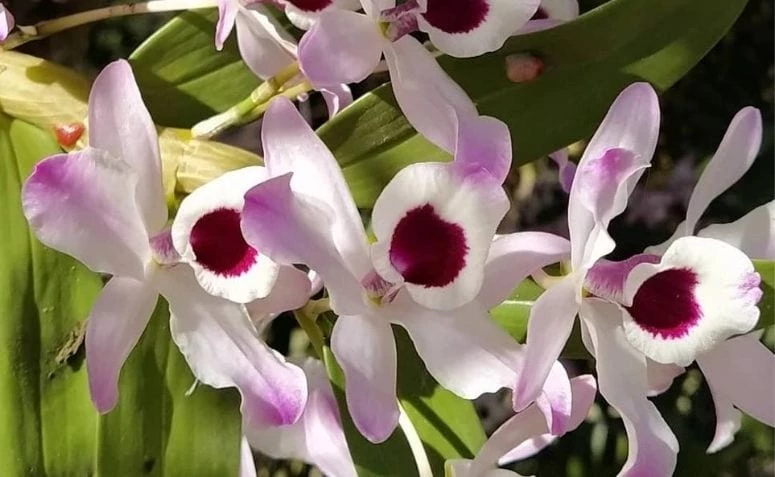
The orchid became popular thanks to the beauty of its flowers and today it is common for many people to cultivate this plant at home. As it is part of one of the largest existing plant families, the Orchidaceae, there are more than 30,000 types of orchids spread across the continents, with the exception of Antarctica.
How to grow orchids
Whoever decides to cultivate orchids needs to take good care of them so that they grow and beautify the environment with beautiful flowers:
Irrigation
Orchids don't like excess water, so watering should be infrequent, usually every 4 days or once a week. To know if it is time to water your plant, you can put your finger in the substrate and sink it to 2 centimeters to check if it is dry or wet. If it is dry, you can water the orchid again.
Lighting
If the orchid gets too much sun, it can burn, so it is best to put it in a half-shade location so that it receives direct light only part of the day or receives indirect lighting.
Fertilization
It can be done with organic or inorganic products. NPK for orchids is widely used, so you must buy the most appropriate for the phase in which your plant is and apply the amount indicated by the manufacturer. If you prefer organic fertilizers, you can use bone meal and castor bean cake combined. Fertilization should not be frequent, but can be done every 2months.
Vase
The best pots for orchids are clay pots, because they drain water more than pots made of other materials. If you grow your orchid in a plastic pot, for example, you need to be careful with watering so that you don't end up soaking the plant.
Change of vessel
When the base of your orchid is too close to the mouth of the pot, it means it's time to make a change. Choose a pot in which it is at least about 2 fingers below the edge of the pot and put stones in the bottom to improve water drainage. Then add soil and coconut fiber chips or washed moss to receive the plant.
Prune
It should be done whenever the orchid has wilted flowers and leaves, but it is necessary to wait until the flowers die before cutting the plant. The leaves should be cut very close to the pseudobulb with sterilized scissors, while the floral stems need to be removed in the same way when they are damaged. After pruning, sprinkle powdered cinnamon on the plant to protect it from fungus andbacteria.
Common Pests
Orchids can be affected by several pests, the most common being aphids, bugs, mealybugs, snails, slugs, and beetles. For each pest, there is a type of treatment. So, it is fundamental to know what is affecting your plant in order to treat it.
See_also: How to unclog sinks: 12 foolproof home methodsHow to identify the orchid species
As there are thousands of orchid genera and species, it is necessary to notice details to identify a specimen of the plant. The easiest way to differentiate them is by the flowers and leaves, since they have different characteristics according to the type of orchid.
If the orchid is already in bloom, for example, you can identify it by the flowers. If not, you can recognize it by the leaves. First, you have to notice aspects such as color, shape, distribution and thickness. Then, you have to compare these data with the characteristics of each species to find out which is your orchid.
Main Types of Orchids
Now, to help you identify species and decide which orchid to grow in your home, we will present the characteristics of the 5 main types. Check them out:
Phalaenopsis Orchids
The orchids of the genus Phalaenopsis are the most popular in Brazil, although they are native from several countries in Asia, such as the Philippines, China and India. They are also known as butterfly orchids, due to the shape of their flowers. Besides the common Phalaenopsis, which can reach 1 meter in height, there are the mini ones, which have a maximum of 30 centimeters. See more about 4 species of the genus:
Phalaenopsis amabilis
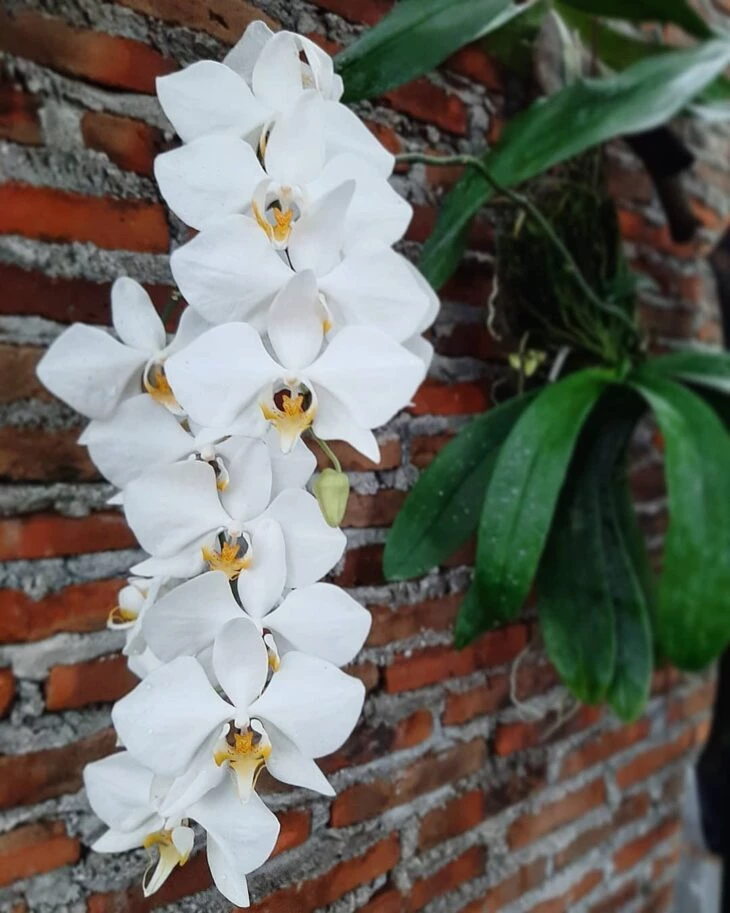
This is a medium sized orchid that can reach up to 50 centimeters. Very common in Brazil, its leaves are olive green and its flowers are white, they are born in summer and can stay open for up to 60 days. At this time of the year, check the substrate frequently, watering should be done 3 to 4 times a week. This species is epiphytic, but can also be cultivated in clay pots.
Phalaenopsis schilleriana
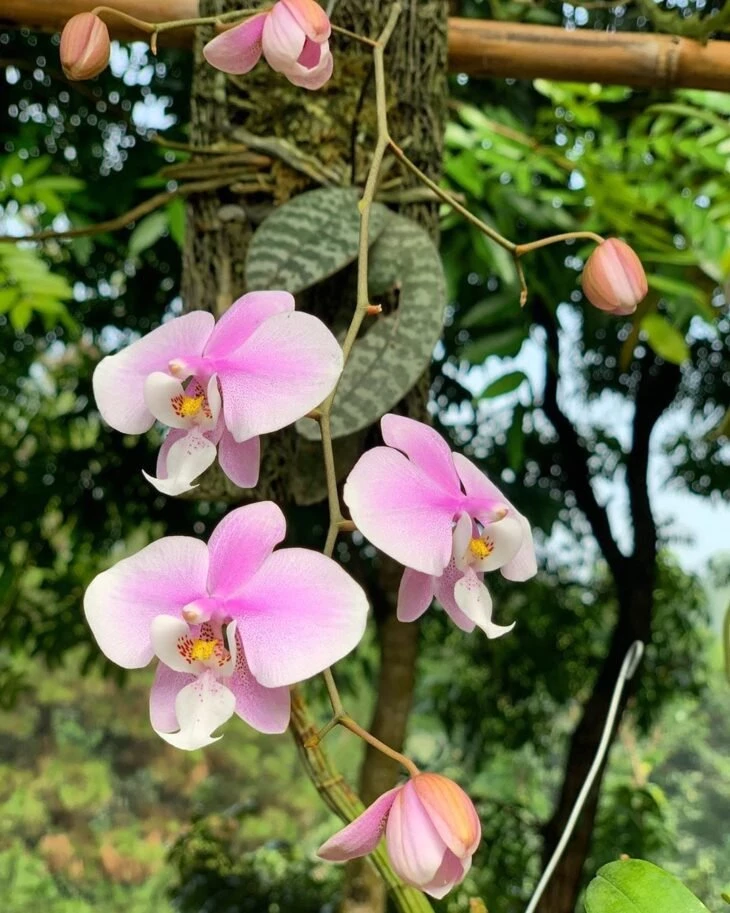
Native to the Philippines, Phalaenopsis schilleriana is also medium sized and can grow up to 50 centimeters. Its pink and purple flowers are beautiful and fragrant, while the leaves are dark green in color. The flowers appear in spring and summer, and usually last up to 4 weeks.
Phalaenopsis violacea

Originally from Sumatra, the violacea species likes to live on trees, but can also be grown in pots. Its main characteristics are the pointed shape of its petals, the violet color of its flowers, its strong perfume, and its broad green leaves. Although the most common specimen is purple, it has variations that give white and blue flowers. It is small and usually reaches a maximum of 35centimeters in height.
Phalaenopsis equestris

This species is from the Philippines and Taiwan and is small, measuring up to 30 centimeters tall. Its flowers are also small, measuring between 1.5 and 3 cm in diameter. It gives several flowers in spring and autumn, which are purple with white details. Like other Phalaenopsis species, the watering of the equestris should be more frequent in summer.
Cattleya Orchids
The genus Cattleya is another very popular one in Brazil, mainly because it is native to the American continent and can be found easily from Mexico to South America. The flowers of this genus are usually large, fragrant, and very beautiful.
Cattleya intermedia

This is one of the most popular orchids in Brazil, as it is native to the country, more specifically from the coast of Rio Grande do Sul to Rio de Janeiro. It has this name due to its intermediate size, from 30 to 50 centimeters. Its perfumed flowers can be found in colors such as purple, white, and bluish tones. To develop well, it cannot take direct sunlight and must be watered frequently.
Cattleya labiata

Also native to Brazil, the labiata is very popular in the country. It is known as the queen of the Northeast or sertão, as it was first found in Pernambuco and is equally common in Ceará, Sergipe, Paraíba, and Bahia. It blooms in summer and fall, and its main characteristics are its lilac, scented, and large flowers. The flower of this Cattleya can reach up to 25 centimeters in diameter.
Cattleya purpurata
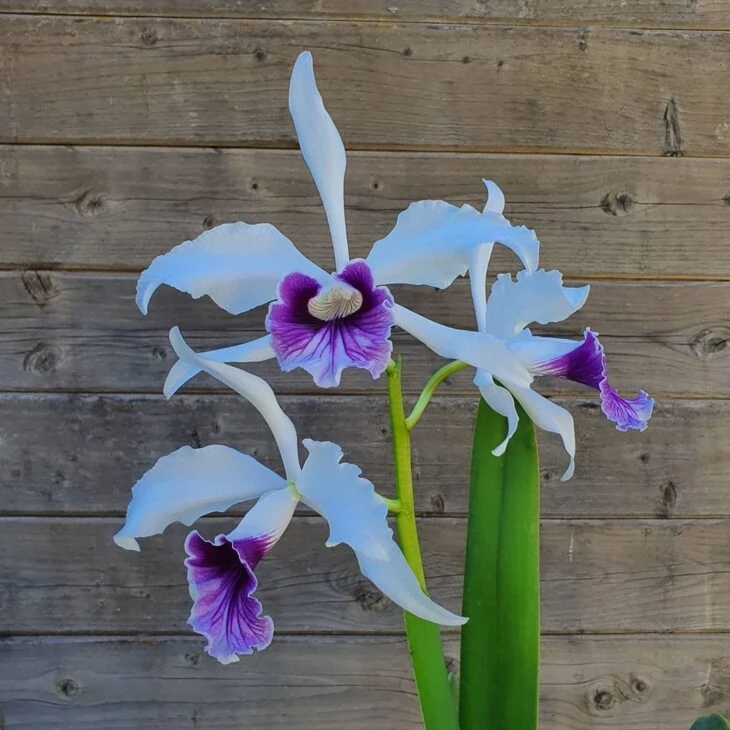
Cattleya purpurata is also a Brazilian species, found in the South and Southeast of the country. It is known for its large white and purple flower, which can reach up to 13 centimeters in diameter. The characteristic flowers appear in summer and last for about 15 days. Cattleya purpurata can reach a height of 60 centimeters, and in winter, watering should be less frequent.
Cattleya luteola

This is not an easy orchid to grow, because it likes temperatures between 18 and 25°C to bloom. However, when grown in the right environment, it gives beautiful yellowish and fine flowers. Luteola is small, reaching approximately 10 centimeters in height, and is found in the Amazon Rainforest, so it is common in regions of Brazil, Peru, Bolivia, and Ecuador.
Paphiopedilum Orchids
Native from Asia, mainly from countries like China, Himalaya and Philippines, the orchids from the genus Paphiopedilum are terrestrial and have flowers that have a very characteristic shape. These have a lip that resembles a slipper and, because of this, this genus is also popularly known as the "slipper" orchid.
Paphiopedilum leeanum
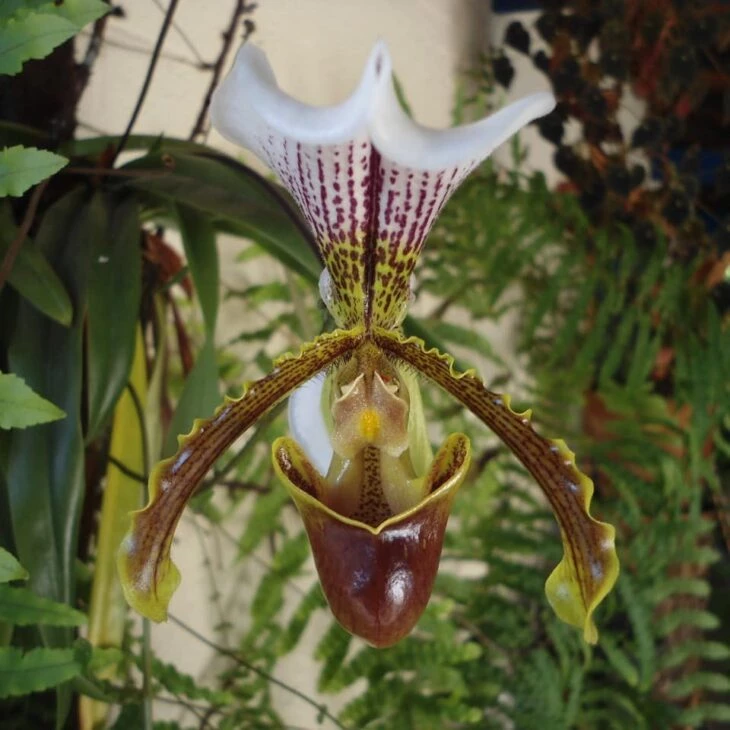
This is a natural hybrid species, bred in the Himalayas and very popular in Brazil. The Brazilians liked leeanum so much and it has adapted so well here that it is the most found of the Paphiopedilum genus in the country. It blooms in winter, its flowers are not scented and are about 10 centimeters long.water in the "little shoe".
Paphiopedilum appletonianum
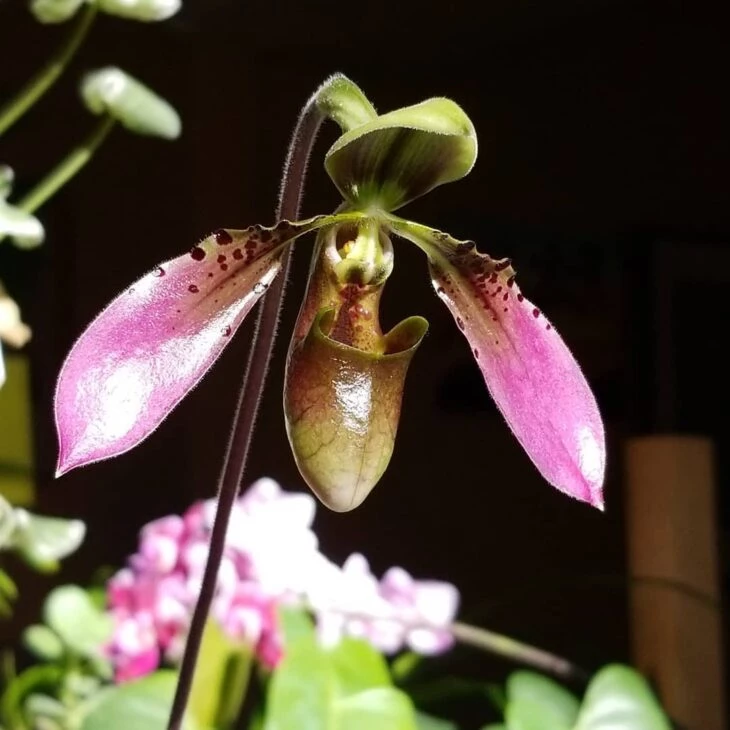
The appletonianum species, which is native to China, Thailand, and Vietnam, impresses with the beauty of its flowers. They are not scented, but have pink petals with green details that enchant orchid lovers. Just like the flowers of the leeanum, they are approximately 10 centimeters long, and the whole plant is about 25 centimeters tall.
Paphiopedilum bellatulum
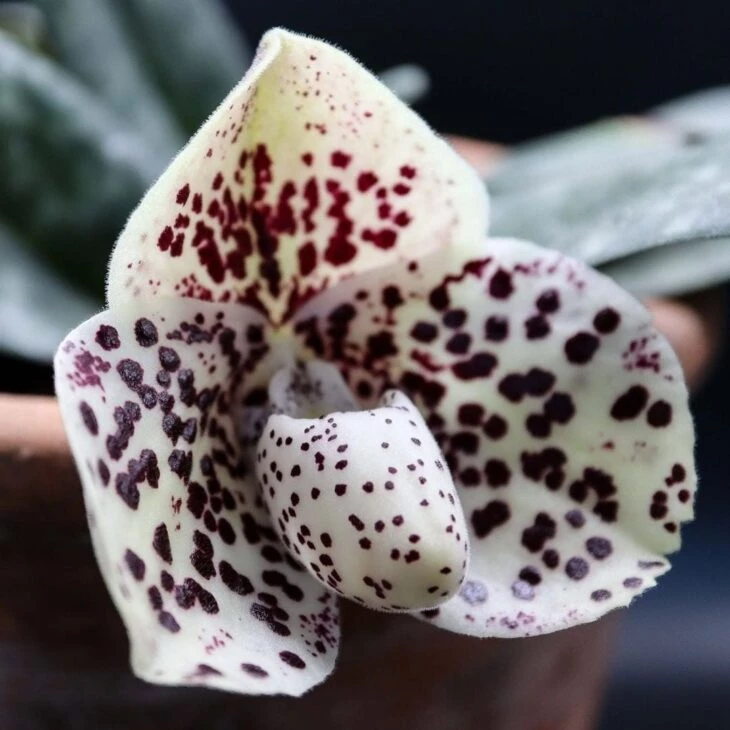
It is found in Brazil, but this species is not so common here. Among its main characteristics are the size and appearance of its flowers. They are very small, approximately 5 centimeters, and their petals have a light yellowish tone and purple dots that call the attention of any lover of flowers. The bellatulum likes water, but care must be taken not to soak it.
Paphiopedilum insigne
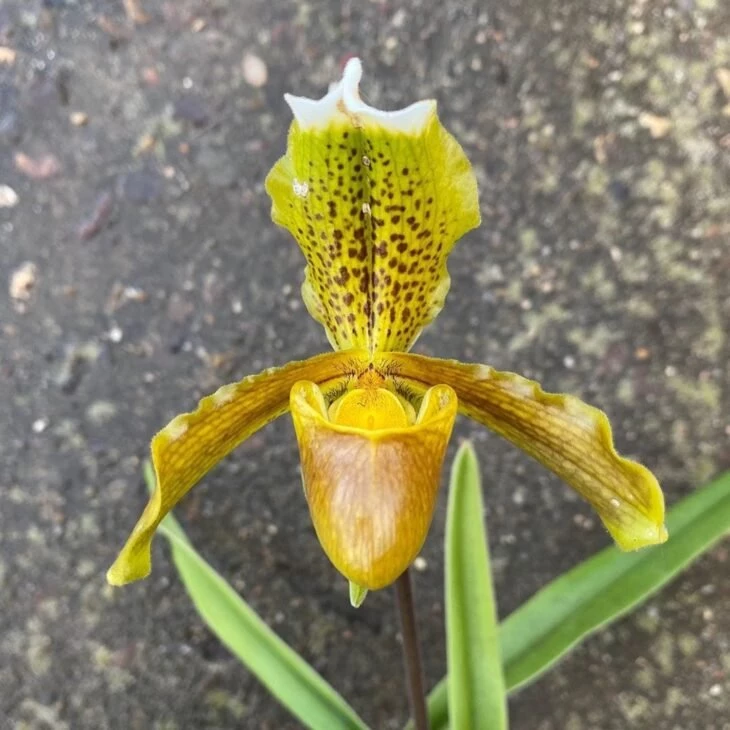
The insigne species is the most famous of the genus worldwide. It is native to cold regions of China and India, but grows well in many places, including Brazil. Although it likes cold places, it needs to be protected from strong winds to develop well. Its flowers are approximately 10 centimeters in diameter, with petals in shades of brown and green, and a sepal with brown dots on the top.a white and green background.
Cymbidium Orchids
The Cymbidium genus is also popular in Brazil, being widely found in arrangements and in homes. These orchids are known for the shape of their flower lip, which resembles a boat. This is why, in certain countries, this genus is known as "the boat orchid". Native to Asia and Australia, it can be terrestrial or epiphytic and must receive strong indirect light to grow.
Cymbidium canaliculatum
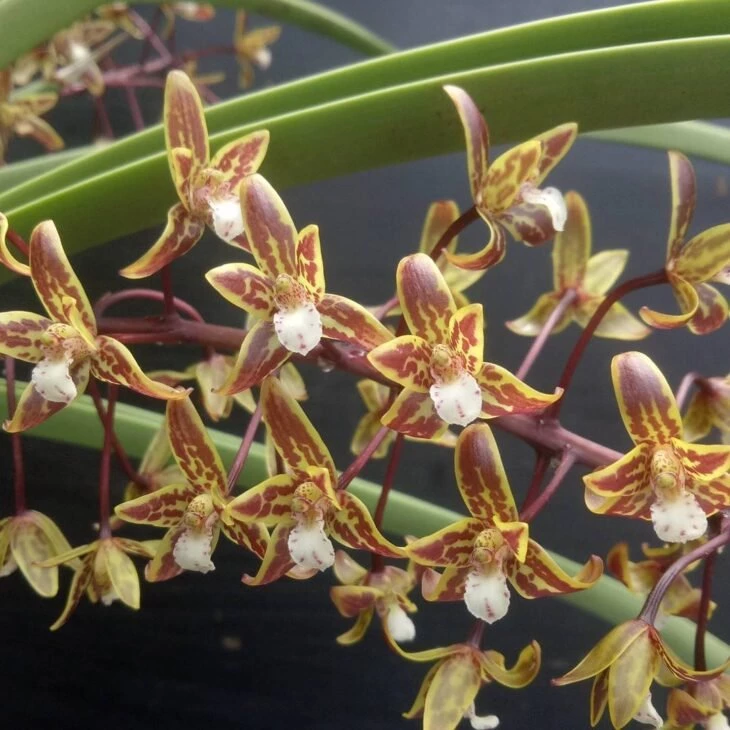
The canaliculatum is a species from Australia that bears very small flowers. They are usually 4 centimeters in diameter, fragrant, and can have different colors since there are variations of this species. However, the best known flower has green petals with brown portions and a white lip with red dots. As with the other orchids of this genus, the flowers of thecanaliculatum are outstanding.
Cymbidium devonianum
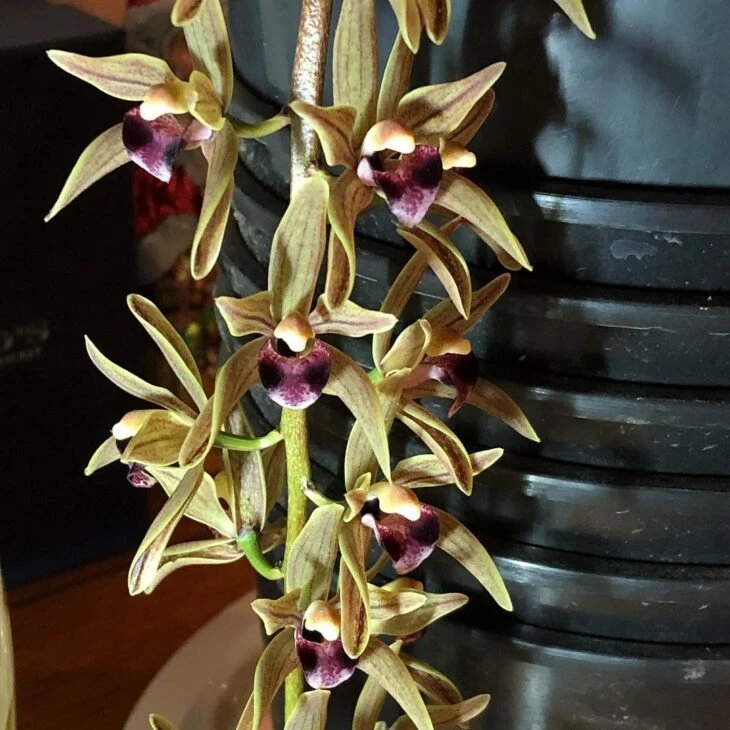
Native to countries such as Nepal, Thailand, and India, Cymbidium devonianum is rare here in Brazil, but is widely used around the world to make hybrids and flowers of different colors, such as red, green, and brown. This species blooms between fall and winter, has small flowers - like canaliculatum - and produces 15 to 30 flowers during the blooming season.
Cymbidium aloifolium
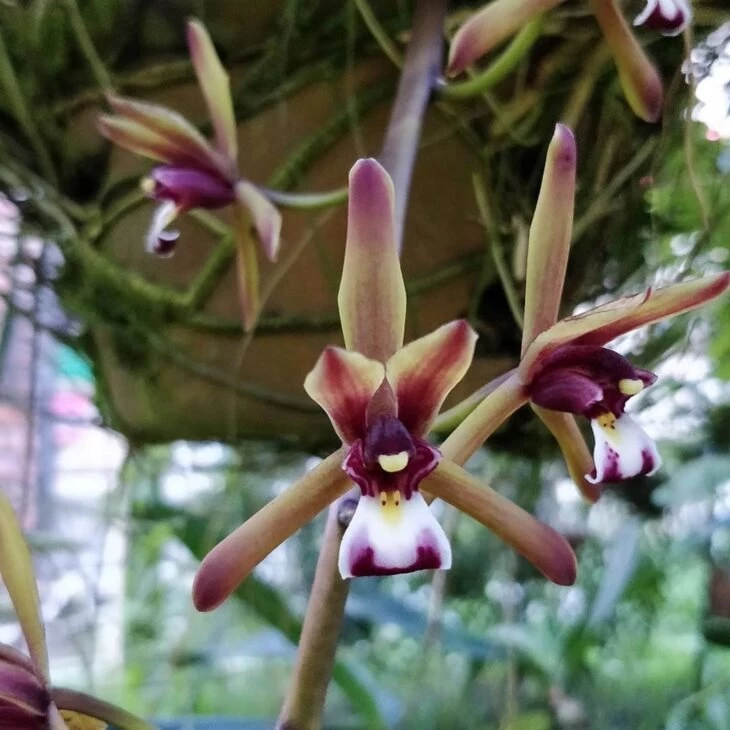
The aloifolium can be epiphyte or lithophyte (plant that grows on rocks). This species has thick leaves and impresses by the color of its flowers. There are variations, but generally have petals with shades of green, purple and purple and white lip. The aloifolium orchids are also widely used to create beautiful hybrids. Those who choose this species need to keep an eye out for snails andmealybugs, because they usually attack these plants.
Cymbidium dayanum

The beauty of the Cymbidium dayanum flowers also enchants orchid lovers. Although it gives beautiful flowers, it is necessary to be patient with this species, because it does not always bloom easily. The dayanum can not stand very low temperatures, so it must be cultivated in places with temperatures above 10° during the whole year. This species is native from Asia and is medium-sized.
Dendrobium Orchids
With more than 1500 species, Dendrobium is one of the largest orchid genera. Its species are usually epiphytic, but there are also lithophyte plants. The genus is native from Asia and Australia, but has adapted very well to Brazil, because it likes tropical climates. The flowers of this group appear in spring and summer, so it needs a lot of water at this time and you must ensure that thesubstrate is always moist.
Dendrobium nobile
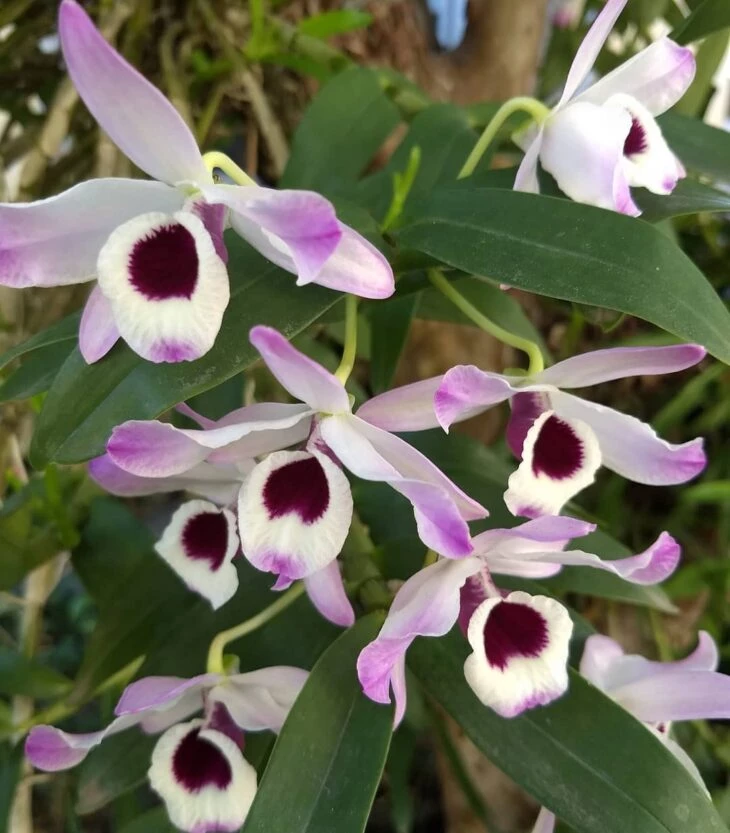
Known as "doll's eye" due to the color of its flower lip, nobile is the most popular of its kind in Brazil. Native to Asia, it adapted very well to the Brazilian climate and has beautiful flowers, which are usually 6 centimeters long and last for 20 days. The species only blooms once a year, but it is good to keep an eye out, because it can bloom more than once in the same bulb.
Dendrobium kingianum
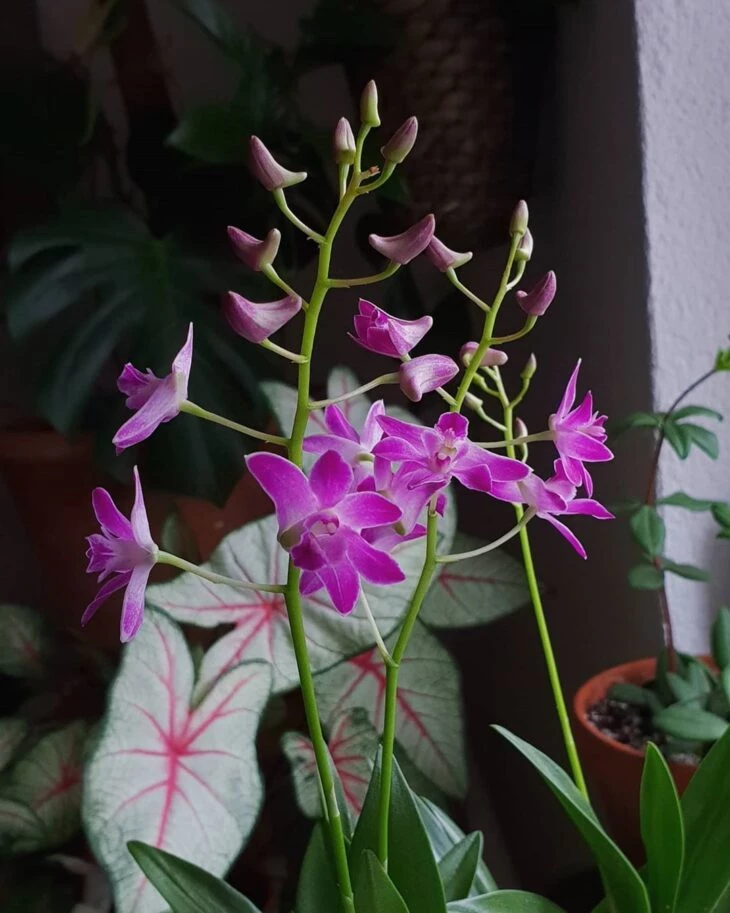
Kingianum is native to Australia, is small in size and has very small flowers that bloom in winter, which measure about 2.5 centimeters in diameter, have a sweet, light scent, and last for about 25 days. The flowers are small, but this species can produce up to 15 flowers in one bloom. As for color, the most common is pink, but they can also be white or blue.
Dendrobium chrysotoxum
See_also: Muxarabi: get to know this imposing element full of visual impact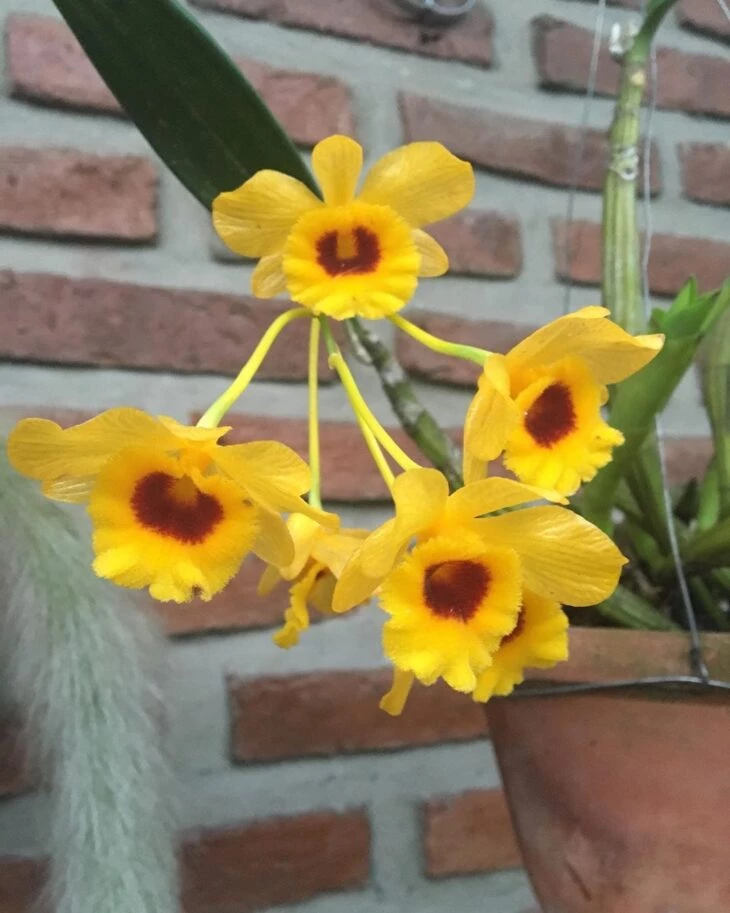
This species likes warm climates very much and, because of this, has done very well in Brazil. It attracts a lot of attention from orchid lovers because of its yellow flowers and the size of them, since they are big close to the extension of the whole plant. The flowers, which appear at the end of winter, measure about 5 centimeters, and the chrysotoxum orchid is between 10 and 30 cm tall.
Dendrobium victoria-reginae

The victoria-reginae is a species from the Philippines that stands out among other orchids for the bluish and, in some cases, lilac or purple color of its flowers. Besides the extraordinary beauty of the flowers, an advantage of this species is that it can bloom more than once a year.
One species is more beautiful than the other, isn't it? To choose which one to grow at home, remember to consider the climate in your city and, of course, the beauty of the flowers.
Types of rare orchids
Among the thousands of orchid species, there are some that are quite rare and call people's attention because of their unique characteristics. Here are 3 rare species that you can grow if you are willing to pay a higher price for your orchid.
Paphiopedilum rothschildianum

Native to Mount Kinabalu, Malaysia, it was discovered in 1887, but in 1950 there was a large harvest of the species and it almost became extinct. Today, it grows in 3 places on the mountain and is protected in the Kinabalu National Park. Besides being rare, it is difficult to grow, has slow growth, and can take up to 15 years for the flowers to appear. For this reason, it is sold for a very high price.
Fredclarkeara After Dark
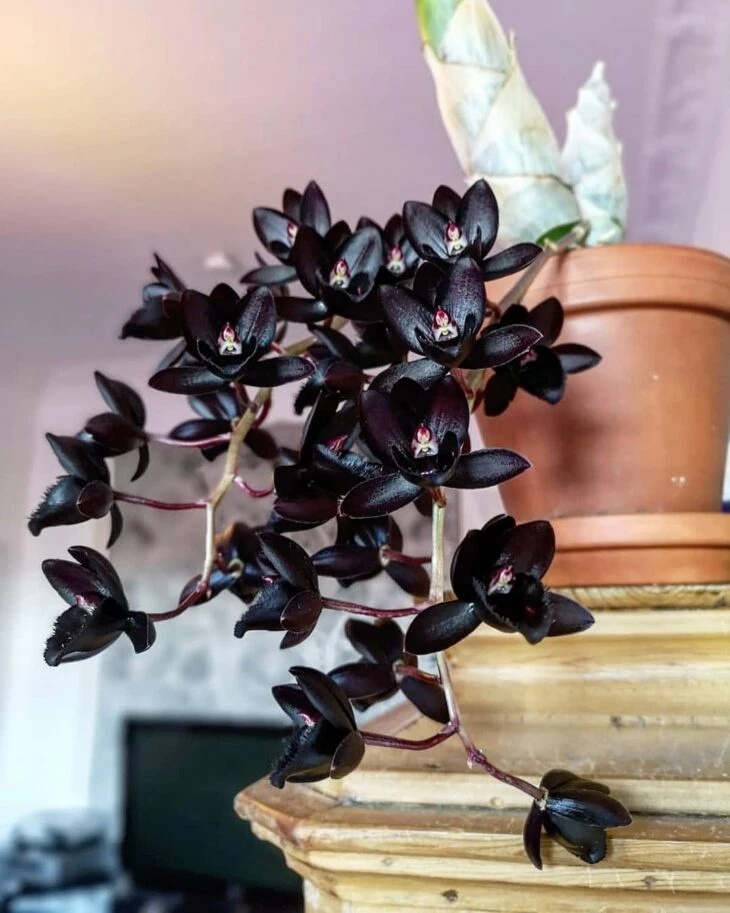
Also known as the black orchid, it is the result of several crosses between species of Catasetum, Clowesia and Mormodes. That is why its flowers have a unique dark coloration. They are fragrant and small (about 4 centimeters), but several can appear in the same bloom, usually lasting 7 weeks. Fredclarkeara After Dark is also difficult to cultivate and hasa high price.
Dendrophylax lindenii
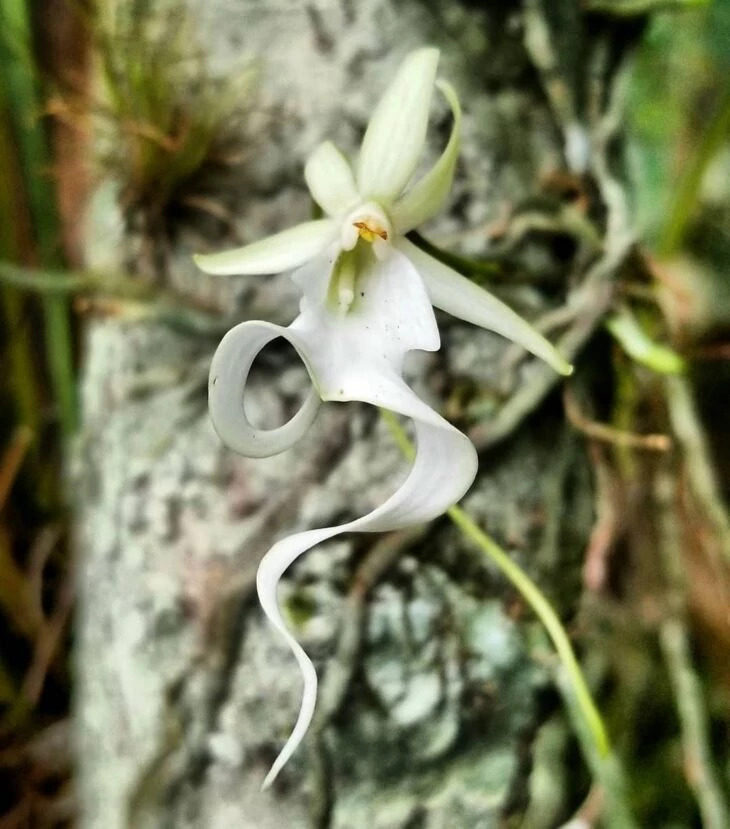
It is an epiphytic orchid native to Florida, Cuba and the Bahamas. It has very white flowers and a flower stem so thin and long that it gives the impression that the flower is suspended in the trees. That is why it became known as the ghost orchid. Its flowers, which smell like apples, enchant with their exotic look. Growing this species outside its natural habitat is very complicated, so it is difficult to find this species.orchid for sale.
After checking all these beautiful species of orchids, there's no way you can't fall in love with one of them! As the cultivation is relatively easy, it makes you want to have one at home even more. And if you don't want to cultivate any of the types of orchids shown here, how about checking the characteristics of the bamboo orchid?


